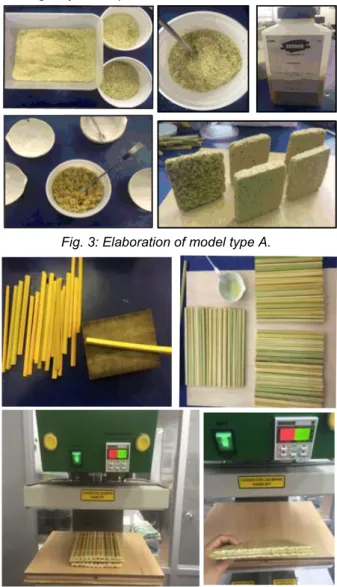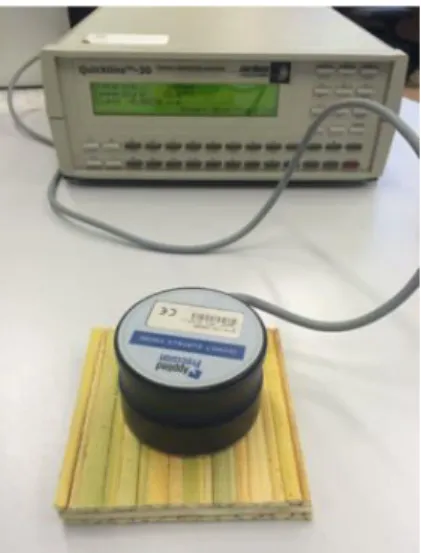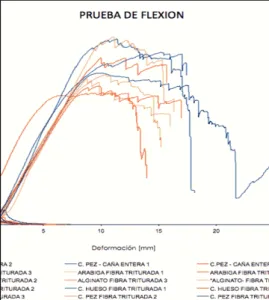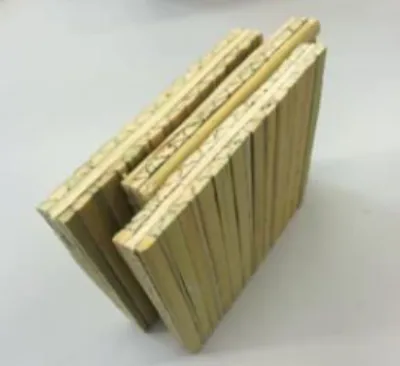EcoGRAFI
2nd International Conference on Bio-based Building Materials &
1st Conference on ECOlogical valorisation of GRAnular and FIbrous materials June 21th - 23th 2017
Clermont-Ferrand, France
TOTORA USED AS THERMAL INSULATION: PROPERTIES AND POTENTIAL
L. Aza1*, M. Palumbo2, A. Lacasta31 Escuela Técnica Superior de Arquitectura del Vallés, Universidad Politécnica de Catalunya, España. 2 Dept. de Engenharia Civil Universidade Federal Fluminense, R. Passo da Pátria 156, Niteroi, RJ, Brasil 3 Escuela Politécnica de Edificación, Universidad Politécnica de Catalunya, España. Av. Doctor Marañón
44 08028 Barcelona.
*Corresponding author; e-mail: leyda_aza@yahoo.com
Abstract
An important part of the environmental impact generated by human activity is the extraction and use of construction materials [Ad- hoc industrial advisory group 2009]; confronting this issue creates the need to develop new alternatives and to experience change towards sustainable construction. The use of natural resources gives significant opportunity to reduce the negative effects of the material production, especially in petroleum derivate products. These effects being the emission of greenhouse gasses (CO2), the consumption of energy and the emission of toxic
substances in the environment, among others. [CCEIM 2010]. A problem that occurs across the Andean high zone in Peru (3,000 to 4,500 m.s.n.m) is the high mortality rate from respiratory diseases due to extreme temperature variations every year; however the population does not die precisely because of the direct impact of extreme weather conditions (snow, hail or frost), but mainly because of the conditions of thermal comfort inside the houses. This project aims to address the development of a new thermal insulator from Totora (Schoenoplectus tatora), an aquatic plant present in the Titicaca Lake - Perú. This has been analysed for its thermal behaviour and various tests have been made which revealed its characteristics and its potential for the use in buildings. In this project two different kinds of panels have been elaborated, using the entire reed and the crushed reed. The values obtained in the tests of thermic conductivity resulted between (λ): 0,046 a 0,058 W/mK) which proof its insulating potential. Furthermore, the material shows other advantages: the raw material used is renewable and the necessary resources for its fabrication come from natural origin. All this indicates that this insulation can be an efficient alternative and is of low environmental impact. This material could be used to improve the conditions of thermal comfort inside the houses around the Andean high zone in Peru, where they are faced with extreme variations of temperature.
Keywords:
Thermal insulator, Natural products, Thermic comfort, Thermic conductivity, Schoenoplectus Tatora.
1 INTRODUCTION
The totora (Schoenoplectus tatora) is an aquatic, fasciculate plant that grows wild and abundant in the Titicaca Lake. It has an erect, flexible and light stem, in the form of a cortical cylinder with spongy parenchyma and aeriferous. This plant has been used for a long time in a traditional way by the Uros, indigenous settlers who inhabit the lake. For them is the main material with which they build the floating islands in which they inhabit, as well as their houses and boats. For these reason the totora has a relevant social and economic importance for the inhabitants of this island. Nowadays it reaches the maximum expression in the world of the singular use of the totora, for that reason the 4 of March of 2013 was declared Cultural Patrimony of the Nation. [Semanario Puntoedu NEO 2010].
There are studies [Hidalgo 2007] that highlight the potentialities of the totora for its use as a construction material, as it has good physical characteristics, including its strength and durability. However, there are no studies that analyze the thermal properties of this material.
Considering that the totora is a local resource, which grows in abundance, renewable, biodegradable, and of low thermal conductivity, it can be an advantage for the use in the Andean region of Peru, since its manufacture would be economic and would help to lower the environmental impact. The use of insulators of vegetable origin such as Typha [Ministere de l’environnement et du Developpement durable état de l’art, Grenoble, France 2014], hemp fiber [Isolana 2014], or wood fiber [Actis 2010] are environmentally
friendly, non-toxic and the raw energy consumed is very Low and helps to reduce the ecological footprint. This sector of Peru has high poverty rates, according to census data obtained and studies carried out by the National Institute of Statistics and Informatics of Peru, [INEI 2015]. The majority of rural dwellings are self-built and do not have the necessary materials or resources; so their homes are not real places of refuge. Faced with this reality, the Ministry of Housing, Construction and Sanitation of Peru, in cooperation with various institutions, has promoted housing improvement projects, one of the most relevant is the project: Homes of Protection [MVCS 2015]. Considering these antecedents, this research project proposes the study and the elaboration of a natural thermal insulation, made of the totora (Schoenoplectus tatora) and analyzes several aspects to give alternatives that enhance and revalorize the use of this material in the construction.
2 MATERIAL
The totora (Schoenoplectus tatora) is a perennial aquatic plant that grows wild in The Titicaca Lake, although it can also be cultivated. It occupies an area of 80.70 km2, grows at a density of 430 stems / m2 and can reach up to 4 m. [Escobar 2004].
Fig. 1: Schoenoplectus tatora.
Its stem is triangular in shape, which lacks branching so it has no knots. Structurally, the stem is a cortical cylinder provided with spongy parenchyma and aeriferous, is rich in chlorophyllous parenchyma that gives the green color [Goyzueta 2010].
3 PROCEDURES
3.1 Materials
The totora (Schoenoplectus tatora): The raw material used in this project has been obtained from the Chulluni area on the shores of the lake, in the city of Puno, Peru, and has been imported into Spain for research.
Fig. 2: Parénquima Schoenoplectus tatora
Four resins of organic origin have been used as binders; fish tail, bone glue, gum arabic and alginate. These binders are also used in restoration work
because their elasticity and cohesive strength make them resistant and easily found [Bailach 2012]. In the case of alginate, it has the capacity to produce irreversible gels in water and a project that analyzes the development of new thermal insulation materials with the use of this resin has been taken as reference [Palumbo 2015] .
3.2 Process of elaboration of probetas:
Two different types of samples have been developed: Model type A: Elaborated with the stem of the crushed totora which once sieved form aggregates of particles more or less spherical of 3.20 mm, 2.00 mm and 1.19 mm in diameter. Different formulations and percentages of mixing between fiber, binder and water have been used. The best result was obtained using the finest fiber by mixing it with a similar proportion of binder and double proportion of water.
Model type B: Elaborated on the whole stem of the totora. After joining the totora reeds perpendicularly, alternately superimposed three-ply panels are formed, which are then pressed cold for 6 minutes at 6 kg / cm 2 using a hydraulic press.
Fig. 3: Elaboration of model type A.
Tab. 1: Unmixed fiber formulations
Tab. 2: Formulations of mixed fibers
4 EXPERIMENTATION
Different tests have been made on the two types of models to evaluate their different properties such as: thermal conductivity, water vapor permeability, and flexural strength test.
4.1 Thermal conductivity test:
When performing this test, it is sought to determine the thermal behavior of the models developed. The Thermal properties analyzer, QuicklineTM-30 electronic equipment has been used.
In order to determine the thermal conductivity (λ), the thermal resistance (R), and the thermal diffusivity (α), different measurements were made to more than 25 specimens with different characteristics between different fiber sizes and thicknesses, measurements were made when models had completed their drying process at room temperature; The data obtained are the thermal conductivity and the thermal diffusivity and have been registered and then compared.
Fig. 5: Thermal conductivity tests, Model Type A.
Fig. 6: Thermal conductivity tests, Model Type B
4.2 Water vapor permeability test:
The objective of this test is to experimentally determine the permeability to water vapor. If the permeability were very different between the materials made with crushed reeds and those made with whole reeds, the situations could be defined (insulation by the interior and by the exterior) in which each of them could be used safely, without risk Of interstitial condensations. Square specimens of 4 cm x 4 cm were used between 1.5 (model type A) and 2 cm (model type B), depending on the type of model. Two samples of each type were required, measured in width, length and thickness, the latter being important to obtain the results. A saturated solution of sodium hydroxide (NaOH) is introduced into one of the vessels and a saturated solution of sodium sulfate (Na 2 SO 4) is introduced into the vessel. The containers are closed with the test pieces and the plasticine is used to seal their edges, ensuring that all water vapor will only pass through the material.
The vessels are placed in an environment with controlled humidity and temperature conditions (23 ° C
and 45%) in order to generate a water vapor pressure difference between the two faces of the material. During the test (in this case five days), the weight of the samples (model, solution and vessel) is recorded daily.
4.3 Test of flex resistance:
The objective of this test is to determine the capacity of different types of models to counteract a given load without breaking; in this way, the strength of these materials can be evaluated at the strain to which they could be subjected due to manipulation during production and placement. The test makes it possible to determine the minimum strength of the material by a strain curve, in order to achieve this, each model is subjected to this test and the flech is measured. Three trials were done for each; in this way more precise data of their behavior are obtained. This test allows us to get an idea of how a panel (which can be up to 3 meters long) behave when it rises from one of its ends.
Fig. 7: Test equipment of materials, Zwick Roell
Fig. 8: Reed models subjected to loads
The development of this test was done with a test equipment of materials of the line Zwick Roell that with the assistance of a software were obtained results of the behavior of the test pieces to flexion. The test speed is 10 million / minute standard force and the spacing between the support points is 100 mm
This process determines the maximum capacity of the models to support a load gradually over a short period of time.
4.4 Fire behavior: radiator test
The objective of this test is to determine the ignition time and the flame extinction capacity of the different test specimens that were subjected to an electric radiator at 500 watts of power, according to UNE 23-723-90. The data that have been obtained are the time of the first ignition, the number of ignitions during a time of 5 minutes, the duration of the flames in each one of these ignitions, and the loss of mass of the test pieces.
During this process, models of 3.7 x 3.7 x 1.5 cm were subjected to a 3 cm distance from the surface to the heat source under the heat of the electric radiator, the lower part was supported by a metallic mesh fire resistant.
5 RESULTS AND CONCLUSIONS:
5.1 Thermal Conductivity Test:
The obtained values of thermal conductivity are between (λ): 0.046 to 0.058 W / mK; the type of binder does not significantly affect the results and the greater differences were due to the particle size that has been used, from the results obtained it is concluded that the totora can be considered a competent thermal insulation within the range of values of other materials marketed as Hemp fiber or wood fiber; Whose values of thermal conductivity oscillate between (0.038 λ and 0.050 λ). The ones that obtained better results were the models with the smallest particle size.
5.2 Water vapor permeability test:
The average value of resistance factor to water vapor models based fiber is crushed between 3.8 and 4.9. No significant differences were observed due to the type of binder used. These are comparable to other natural insulating materials such as wood fiber, flax or hemp values.
Preliminary results indicate that whole reeds materials have a lower permeability, with resistance factors between 10-20.
5.3 Flexion resistance test:
The test flexural strength has enabled verify that it is possible to develop rigid panels from the union of the reeds with organic resins, it was found that the standard force reached a range of 240 N / mm2 to 320 N / mm2 while polystyrene expanded according to their density reaches ranges 174, N / mm2 [Sundolitt 2010] showing that the adhesion of the rods and being pressed in alternating layers are able to have a significant resistance to bending, this allows the insulator can be used as panel Rigid and easily manipulated.
However, the flexural strength of the totora ground fiber specimens is much lower compared to the specimens made of whole reeds, the strength of the ground fiber samples is given in a range of 6 N / mm2 at 25 N / mm2 (standard force)
Tab. 3: Record of thermal conductivity measurements
5.4 Fire behavior: Radiator Test
The results of the behavior of the material with fire have been good, the behavior of the models was compared untreated and they were treated with alum and borax. The behavior of untreated models is better compared to polymeric foams as it self-extinguishes and also this behavior improvement in the treated materials, showing the favorable response of the material to treatment with flame retardants.
Fig. 10: Models subjected to the radiator test. Tab. 4: Radiator Test - Results Record
6 CONCLUSIONS
For all the results obtained during this investigation it can be concluded that the totora can be considered a competent thermal insulation, since the thermal conductivity values obtained were between (λ): 0.46 to 0.58. Considering that the values of thermal conductivity of the various insulating materials currently used oscillate between values of 25 and 65 mW / m [IVE 2011].
Besides being a material easy renovation is a good alternative to reduce consumption of non-renewable resources. The means necessary for its manufacture are not intensive and can be easily implemented in the region.
As already mentioned, totora reeds can measure up to 4 meters high, with stems that have no knots, which could allow large-format panels.
Fig. 11: Panel of whole reeds
7 REFERENCES
[Actis 2010] Aislamientos de fibra de madera Sylvactis 55fx .
[Ad- hoc industrial advisory group 12009]. The energy-efficient buildings - E2B PPP.
[CCEIM Centro complutense de estudios e información ambiental de la fundación general de la Universidad Complutense de Madrid. Cambio Global España 2010]. Sector edificación: la imprescindible reconversión del sector frente al reto de la sostenibilidad.
[Goyzueta 2010] Gilmar Goyzueta Camacho; René Alfaro Tapia: Martha Aparicio Saavedra; Totorales del Lago Titicaca.
[Escobar 2004] Fortunato Escobar Mamani; Manejo sustentable de recursos naturales de la Reserva Nacional del Titicaca: el caso Jatun Isla de sector Ramis y la isla flotante los Uros de sector Puno. [Palumbo 2015] Mariana Palumbo; Contribution to the development of new Bio-Based Thermal Insulation Materials made from vegetal pith and natural binders: hygrothermal performance, fire reaction and mould growth resistance.
[MVCS 2015] Ministerio de Vivienda Construccion y Saneamiento; Abrigando Hogares experiencias con medidas de confort termico en viviendas rurales Altonadinas.
[Semanario Puntoedu NEO año 2 nº1 2010]. Aprovechamiento sostenible de la totora en la comunidad de los uros.
[Sundolitt 2010] Poliestireno expandido, CatáLogo de productos para la construcción; aislamiento y aligeramiento.
[Ministere de l’environnement et du Developpement durable état de l’art, Grenoble, France 2014] Utilisations traditionnelles et contemporaines de roseaux thypa et de fibres végétales dans la construction.
[IVE 2011] Instituto Valenciano De La Edificación Cuadernos De Rehabilitación, productos y materiales; propiedades de aislantes térmicos para rehabilitacion energética.
[Bailach 2012] ; Clara Bailach; Laura Fuster; Dolores J. Yusá; Pau Talens; Sofía Vicente Palomino; Gelatinas y Colas para el uso en tratamientos de restauración, estado de la cuestión. Instituto Universitario De Restauración del Patrimonio de la Universitat Politècnica De València.
[INEI 2015] Instituto Nacional de Estadística e Informática del Perú, base de datos.
[Isolana 2014] Aislamiento natural aislamientos ecológicos.
[Hidalgo 2007] Juan Fernando Hidalgo; Totora material de construcción – Parte I




